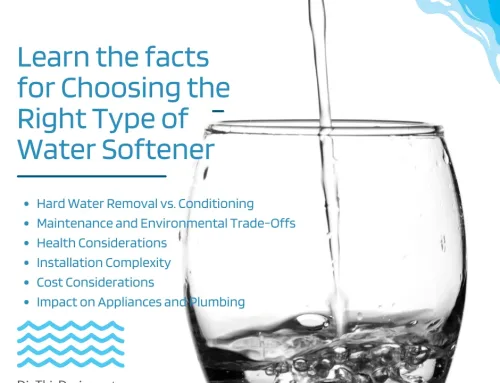The roof health plays a pivotal role in the safety, functionality, and aesthetic appeal of a home. While a well-maintained roof can enhance a home’s design and ensure its structural integrity, neglecting roof health can lead to severe risks, ranging from cosmetic damage to significant safety hazards.
Tips for Maintaining Roof Health

The Role Of Roofing In Home Design
The impact of roof health on home design is multi-faceted, influencing various aspects, from aesthetics to functionality.
- Aesthetic Impact
A well-maintained roof enhances the home’s exterior appearance and contributes to its curb appeal. Architectural shingles, tiles, or other roofing materials in good condition add to the aesthetic charm of the property.
To add, roof health conditions should harmonize with other exterior elements. Peeling, fading, or damaged roofing materials can disrupt this harmony. Also, the roof’s state can either complement or undermine the home’s architectural style, whether it be modern, traditional, or something else.
That said, preserving your roof’s aesthetics for as long as possible is a matter of necessity. In this case, reliable residential roofing or those from your locale that offer top-notch installation, restoration, replacement, and maintenance services are your best bet.
- Functional Impact
A healthy roof, with adequate insulation, contributes to the home’s energy efficiency, reducing heating and cooling costs. To add to that, efficient roofing materials and designs (like cool roofs) can significantly impact the home’s overall thermal performance.
- Design Flexibility And Innovation
A strong and healthy roof can support extra design elements like skylights, roof gardens, or solar panels, expanding design possibilities. Also, roof health allows homeowners to adapt to emerging design trends, such as sustainable roofing materials or integrated technology, without worrying about underlying structural issues.
- Long-Term Impact And Value
The condition of the roof directly impacts the property’s market value. Remember, a well-maintained roof is a key selling point.
Roof Health And Home Safety
The health of a home’s roof is a critical factor in ensuring the safety and well-being of its occupants, guarding against environmental hazards and structural risks.
- Weather Resistance
A robust roof is the primary defense against environmental elements such as rain, snow, wind, and extreme temperatures. Compromised roof integrity can lead to water intrusion, which can cause structural damage, mold growth, and deterioration of interior spaces.
Moreover, in areas prone to severe weather, such as hurricanes, tornadoes, or heavy snowfall, the condition of the roof is crucial. A damaged or weakened roof can lead to catastrophic failure during such events, posing a direct risk to the safety of the occupants.
- Structural Integrity
The roof is an integral part of the building’s frame. It ties together the walls and helps distribute the weight of the structure evenly. A healthy roof ensures that this weight distribution remains balanced, preventing undue stress on any part of the building.
Moreover, the roof plays a vital role in bearing loads, including its own weight, snow, and wind loads. If its structure is weakened or damaged, it may not properly support these loads, leading to structural compromise.
- Health And Air Quality
One of the primary functions of a healthy roof is to prevent moisture from entering the home. Moisture intrusion due to leaks or poor roofing can lead to the growth of mold and mildew, which are significant health hazards, particularly for individuals with allergies, asthma, or weakened immune systems.
In addition, a poorly ventilated or damaged roof can lead to the accumulation of airborne pollutants, such as volatile organic compounds (VOCs), radon, and other harmful gases. These can emanate from building materials, household products, and natural sources, and their concentration can increase with inadequate ventilation.
- Fire Resistance
A well-maintained roof, especially one made from fire-resistant materials like metal, clay, or certain composite shingles, can significantly slow the spread of fire, providing more time for emergency response and evacuation.
Conversely, a neglected roof with accumulated debris, such as dried leaves or branches, or made from highly flammable materials like aged wood shingles, can easily catch fire and rapidly accelerate the spread. Compromised roofs with missing shingles or tiles also leave the underlying structure more vulnerable to fire damage. Additionally, poor maintenance can lead to electrical issues or unnoticed damage, which might become ignition points during a fire.
Maintenance And Regular Inspections for Good Roof Health
Regular upkeep is what will ultimately uphold the beauty and integrity of your roof. Here are some best practices:
- Inspection Tips
Regular inspections can identify potential problems like cracked tiles or shingles, blocked gutters, and other issues that can escalate if unaddressed.
- Professional Assessments
Professional roof inspections are critical for assessing roof health accurately and for performing complex maintenance tasks safely and effectively.
- Preventive Measures
Preventive maintenance, such as clearing debris, ensuring proper insulation, and timely repairs, can extend a roof’s life and prevent major issues.
Conclusion
Roof health is a critical aspect of home safety and design. Regular maintenance, understanding the impact of material choices, and staying informed about innovations are key to ensuring a roof’s longevity and effectiveness.
Other posts you might enjoy:
Gutters Ensure Your Home’s Health – 11 Essential Tips for Proper Drainage





